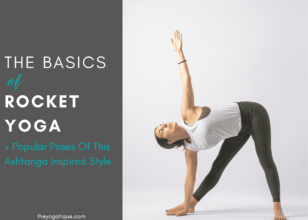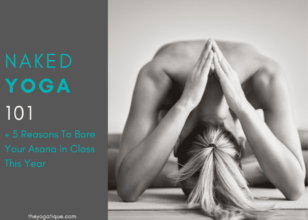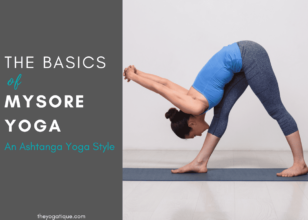If you've tried meditation but found it wasn’t for you, maybe the yoga Nidra benefits I introduce in this article are just what you’ve been missing! I’ll share the top seven reasons to practice Yoga Nidra and the scientific research around it.
Not only is this practice effortless to do, but it benefits your body and mind in various ways. From stress relief to improved sleep to treating chronic pain, there are so many magnificent benefits from a regular yogic sleep practice. What’s more, many of these benefits are backed by science!
If you’ve been struggling to relax, this ancient practice may offer you a better way to experience deep relaxation.
Interested in incorporating this yogi ritual into your self-care practice? Then read on. Be sure to read until the end, as I’ll also detail the eight stages of yogic sleep and share a script you can try yourself.
Article content:
(Click any link below to jump directly to section)
7 incredible benefits of Yoga Nidra
This powerful and transformative practice offers a wide array of benefits that extend beyond mere relaxation. The benefits of yoga nidra include:
- Stress reduction
- Lessens anxiety and PTSD
- Improves sleep quality and combats insomnia
- Treats chronic pain
- Enhances cognitive function
- Improves self-awareness and presence
- Cleanses and balances the chakras
1. Stress reduction
Yoga Nidra has an incredibly calming effect on the sympathetic nervous system, shifting you from the ‘fight-or-flight' mode to the relaxation response. This lowers elevated cortisol levels and promotes emotional self-regulation. As a result, we feel more in control of our thoughts and less reactive to the many stressors we encounter in daily life.
2. Lessens anxiety and PTSD
The nervous system's emotional relaxation response also helps reduce anxiety and emotional tension related to post-traumatic stress disorder. There have been clinical trials where people with PTSD have practiced Yoga Nidra, and the results were impressive – I'll share one later!
3. Improves sleep quality and combats insomnia
This practice induces a sleep-like state, stimulating the brain waves that occur during deep sleep. This makes Nidra an excellent exercise for people experiencing sleep disorders and sleep
If you often have difficulty falling asleep or if you often wake up during the night, you'll surely notice an improvement in your sleep quality after practicing.
4. Treats chronic pain
Because Yoga Nidra releases bodily stress and tension, many people with chronic pain notice their symptoms lessen after starting this practice. As you enter a state of deep relaxation, you can fully relax your physical body, which breaks up energetic blockages, lowers inflammation, and stimulates the immune system.
5. Enhances cognitive function
Yoga Nidra trains your brain to accept mental relaxation, which helps to prevent cognitive decline as you age.
The conscious relaxation that yogic sleep promotes creates space in your mind removing all the repetitive thoughts that create that familiar feeling of brain fog. With improved mental clarity, you'll experience greater concentration and memory.
6. Improves self-awareness and presence
Nidra helps to facilitate personal growth by allowing you to gain a deeper awareness of yourself. This occurs through the Sankalpa setting stage, where you reflect and set a specific intention for yourself. It also helps you connect more to the present moment, maintaining awareness of your body and the world around you.
7. Cleanses and balances the chakras
Nidra practice brings you into a theta state, which matches the frequency that the third eye and crown chakras operate on. Yogic sleep can stimulate and align all seven chakras but is particularly beneficial for awakening the upper chakras. Usually, the third eye and crown chakra are the most challenging energy centers to stimulate.
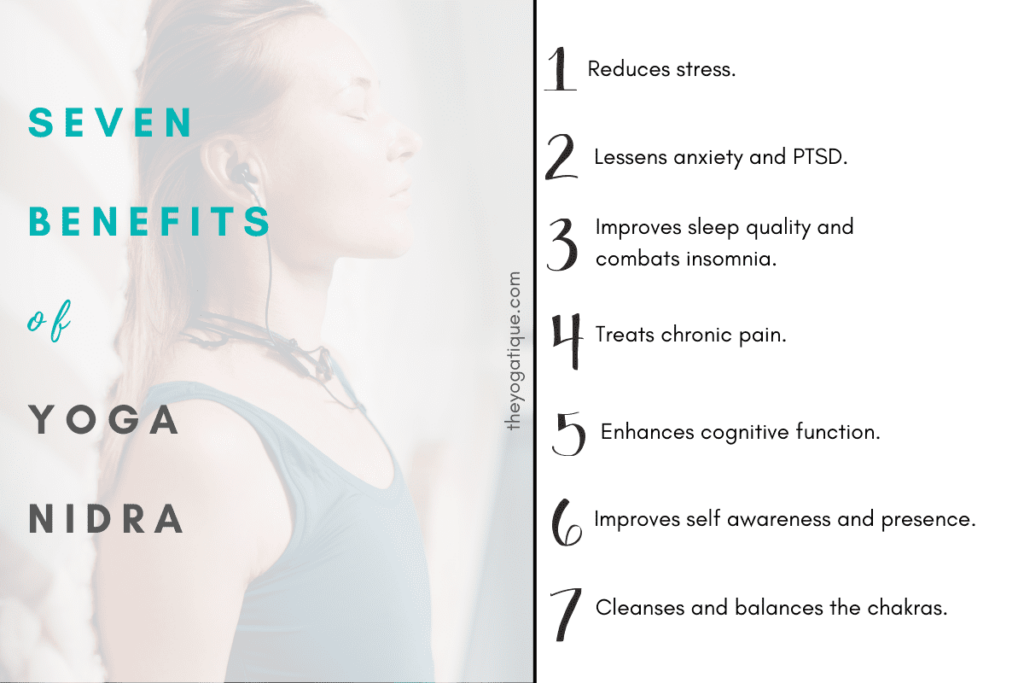
Yoga Nidra for beginners
Unlike other styles of yoga, this one accessible to everyone, even beginners. Similar to Pranayama, it does not require you to move or perform any postures. As all you need to do is lay down, making it a practice that older people and those with physical limitations can also benefit from.
If you're new to this, you're likely wondering how often to practice. At first, I recommend practicing Yoga Nidra once a week and then gradually increasing it to several times a week.
You can even practice it daily if you like. In fact, the more you practice, the more you will notice the benefits of it in your everyday life.
Yoga nidra side effects
The only side effect is that it might make you sleepy. So even though you can practice Nidra any time of the day, be mindful that it might make you a little sleepy if you do it before work.
When to practice
Many people prefer to practice in the evening to reduce stress after a busy day and prepare the body and mind for sleep. The only time you should not do a Yoga Nidra practice is right after eating, as it is not a good idea to lay down in the corpse pose while digesting.
Also, note that it cannot replace sleep. While it may make you feel like you have just woken up from a blissful nap, you still need your usual eight hours of forty winks.
↓Great Yoga Alliance certified yoga teacher trainings you should look into↓
The 8 steps of a Yoga Nidra session
A Yoga Nidra session is structured in eight steps designed to guide individuals into a state of deep relaxation and heightened awareness. Each step is meticulously crafted to facilitate a journey from outer activity to inner stillness. The eight stages of Nidra are:
- Internationalization
- Sankalpa
- Rotation of consciousness
- Breath awareness
- Opposites
- Visualization
- Revisit sankalpa
- Externalization
1. Internalization
Settling into the practice by getting comfortable in savasana and turning your attention inwards.
2. Sankalpa
Setting an intention for your practice. This can be a general quality you want to cultivate or a specific goal in any area of your life.
3. Rotation of consciousness
A guided body scan, moving your awareness from one body part to another.
4. Breath awareness
Counting your breath backward from a number like 15 or 12 to 1.
5. Opposites
Visualizing and feeling opposite sensations in your body, like hot and cold and heavy and light.
6. Visualization
Envisioning specific images or scenes. This can be shifting quickly from one object to another or visualizing one scenario in great detail.
7. Revisit sankalpa
Returning to your initial intention.
8. Externalization
Slowly coming out of the practice by bringing awareness back to your breath, the body, external environment.
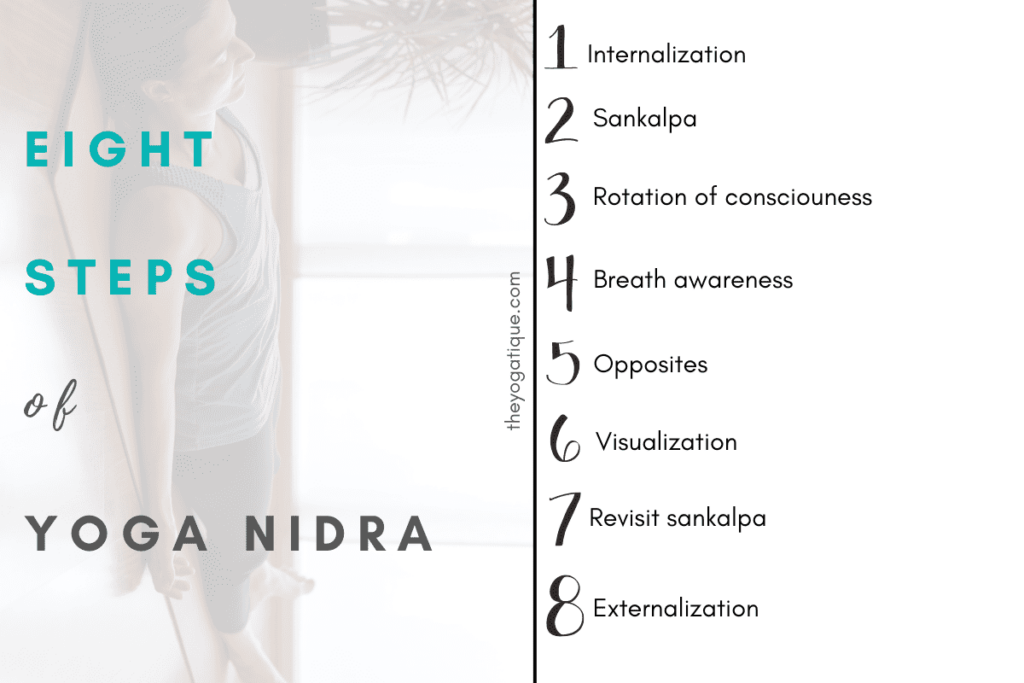
Yoga Nidra vs meditation
While both Yoga Nidra and traditional meditation share the common goal of promoting mental clarity and inner peace, they differ in approach and benefits. And something that surprises many, is that Nidra is not technically considered a style of meditation.
- Yoga Nidra: A unique deep relaxation practice that's very structured and follows eight specific steps. It can only be practiced lying down and requires at least 15-minutes.
- Meditation: A broad practice with many different techniques. It can be practiced sitting upright and for as little as 5-minutes.
Scientific research
Various clinical studies have proven the benefits of Yoga Nidra. For example, one study followed a group of participants who practicited it for 11-minutes every day for 30 days. The results showed significant stress reduction, and the participants reported better sleep, fewer negative thoughts, improved self-esteem, and higher overall well-being.
Another study explored its effect on people with PTSD over an 8-week program. All participants reported less emotional pain, reduced stress and anger, and increased feelings of relaxation and peace.
One fascinating thing about Yoga Nidra is the changes in the brain it causes, like taking your brainwaves from beta waves (the active waking state the brain is usually in) to delta and theta brainwaves, which are much calmer and more relaxed states.
Here the body's relaxation response (parasympathetic nervous system) is triggered, lowering the heart rate and blood pressure and shifting you into deep rest.
Takeaway on the benefits of yoga nidra
Yoga Nidra is hands down, one of the easiest yoga practices and is more accessible than transitional seated meditation. So give it a go today and experience the many fantastic yoga nidra benefits for yourself!
FAQ about yoga nidra
What is the brain state of yoga nidra?
Yoga nidra takes your brain into an alpha state. This is the brain wave frequency that links conscious thought with the subconscious mind.
Is it OK to fall asleep during yoga nidra?
While many beginners may feel so relaxed in yoga nidra that they fall asleep, you will get the most benefits by staying awake during a yoga nidra session.
Some online yoga studios, online yoga teacher training programs, and brands that we write about may offer us a small percentage should you decide to purchase after reading our content. Thank you for enabling us to exist!









